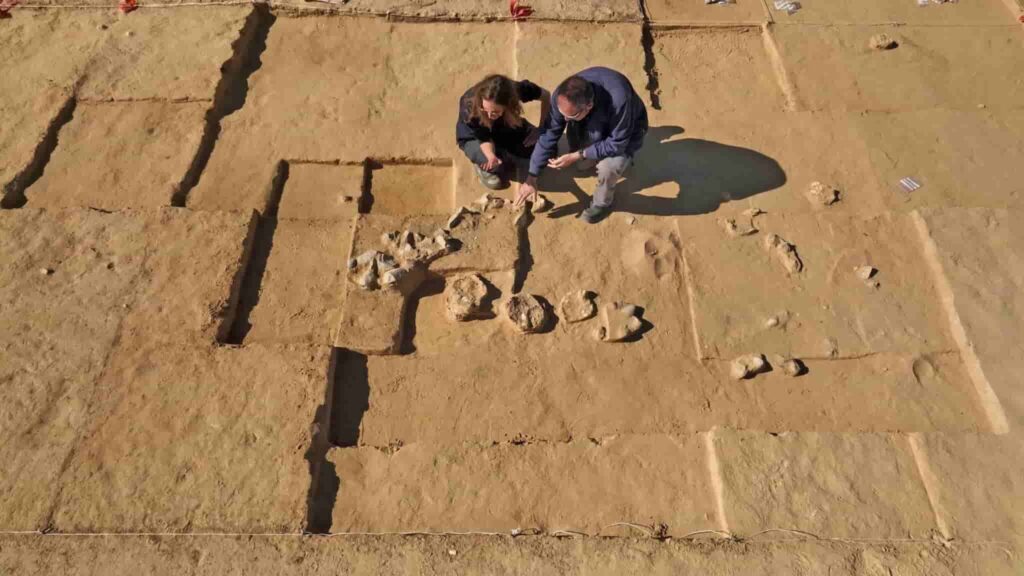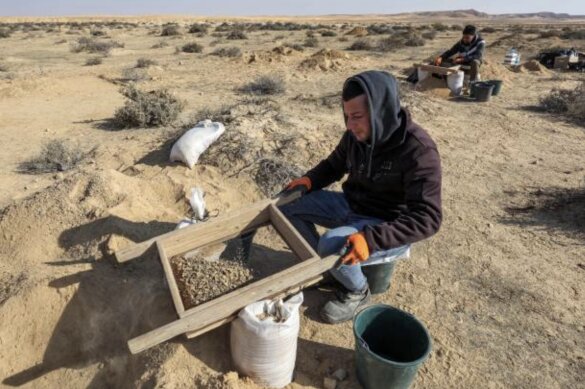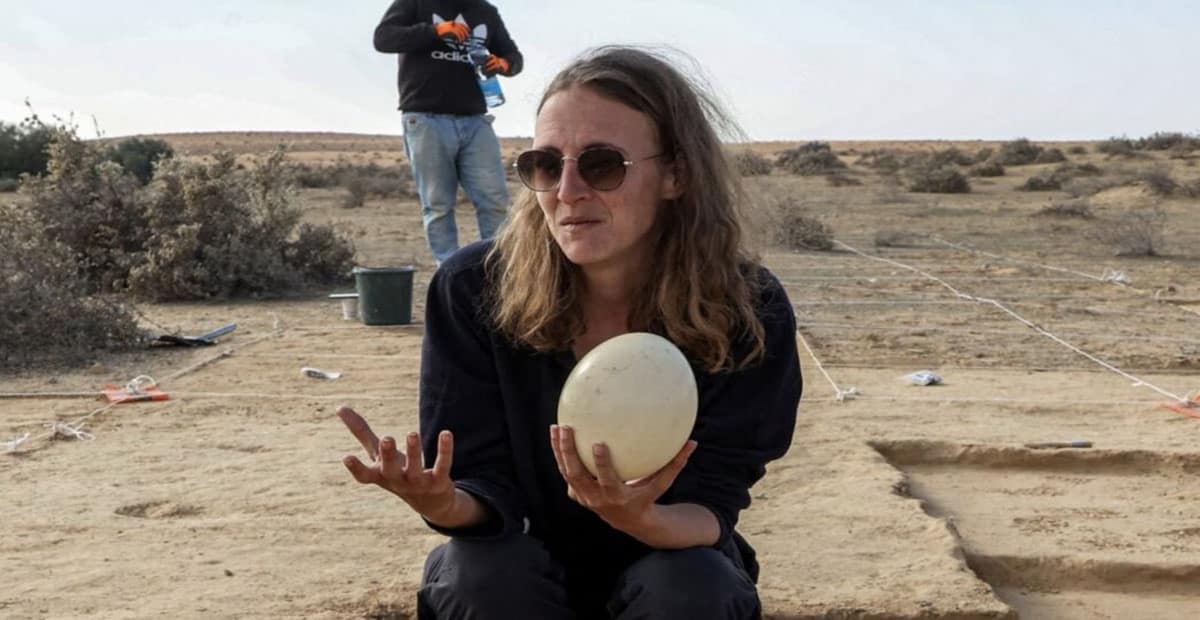4000-year-old Ostrich Eggs Discovered in Negev Desert
Several ostrich eggs were uncovered in the Negev next to a prehistoric fire pit, the Israel Antiquities Authority announced Thursday.
“This is a very important find that—with the help of modern scientific methods—can teach us a lot about the nomadic people of the desert in ancient times,” said Lauren Davis, the IAA excavation director.
Experts preliminary dated the eight eggs to 4,000-7,500 years ago. Further research will be conducted in the lab in the near future. The remains were found during an excavation initiated by the Jewish National Fund and the Ramat Negev Regional Council ahead of work to prepare new agricultural land for the village of Be’er Milka.

“We found a campsite, which extends over about 200 sq. m, that was used by the desert nomads since prehistoric times”, said Davis. “At the site, we found burnt stones, flint and stone tools as well as pottery sherds, but the truly special find is this collection of ostrich eggs. Although the nomads did not build permanent structures at this site, the finds allow us to feel their presence in the desert.
She explained that this kind of campsite was quickly covered over by the sand and re-exposed to the sand movement over hundreds and thousands of years.
“This fact explains the exceptional preservation of the eggs, allowing us a glimpse into the lives of the nomads who roamed the desert in ancient times,” Davis added.
Ostriches were common in the area until the 19th century when they became extinct.
“We find ostrich eggs in archaeological sites in funerary contexts, and as luxury items and water canteens,” said IAA’s Dr. Amir Gorzalczany who has carried out research on the topic. “Naturally, they were used as a source of food: one ostrich egg has the nutritional value of about 25 normal chicken eggs!”

“There is sometimes even evidence of decorating and incising on ostrich eggs, showing their use as decorative items,” he added. “It is interesting, that whilst ostrich eggs are not uncommon in excavations, the bones of the large bird are not found. This may indicate that in the ancient world, people avoided tackling the ostrich and were content with collecting their eggs.”
The eggs were found broken but will be reconstructed in the lab after the end of the excavation. “The whole egg may tell us the species, and exactly what they were used for,” Davis concluded. “As far as I’m concerned, every eggshell is worth its weight in gold! I am really looking forward to the research in the labs. The best is yet ahead!”




